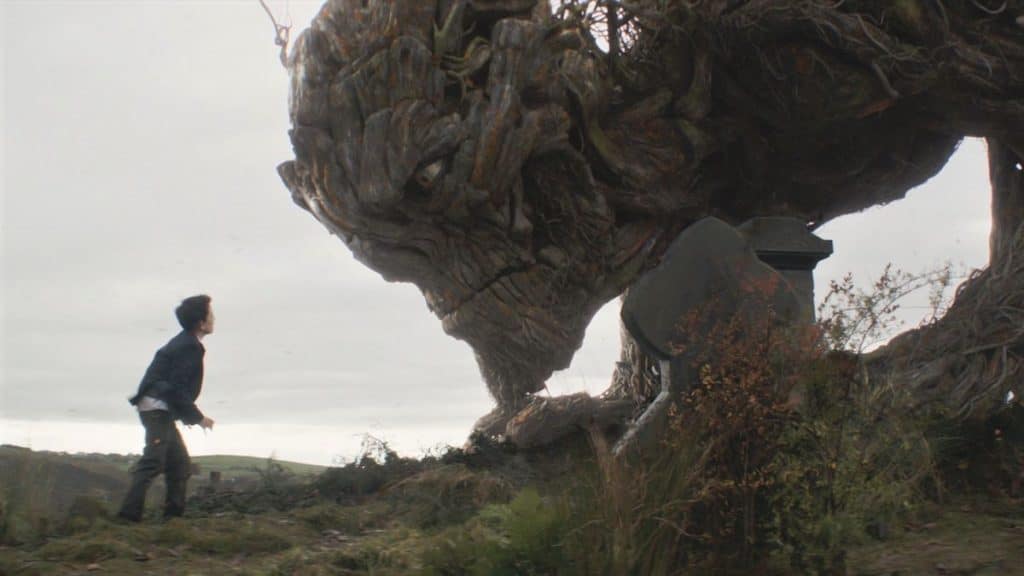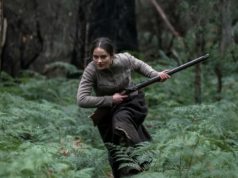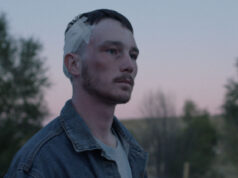Even though it boasts a great cast, stunning visual effects and a promising premise, A Monster Calls is too dark and a missed opportunity
A Monster Calls (2016)
Directed by J. A. Bayona. Screenplay by Patrick Ness, based on his novel “A Monster Calls” from an idea by Siobhan Dowd. Starring Lewis MacDougall, Felicity Jones, Sigourney Weaver, Toby Kebbell, James Melville, Geraldine Chaplin and Max Golds.
When we think about coming-of-age fantasy films, such as The Wizard of Oz (1939), Where the Wild Things Are (2009) or The Chronicles of Narnia (2005), it is easy to see what they are trying to do and who their audience is. In the case of J. A. Bayona’s A Monster Calls, I couldn’t help but wonder after some time: who is this film for? Is this a children’s story? Considering how dark it is and the way it deals with themes like dying, loss, guilt, abandonment, solitude, and how we must learn to let go of someone we love, I would say this is far from the family movie it clearly wants to be — and the fact it doesn’t really know how to go all the way and explore these themes into a more consistent whole makes it a missed opportunity as well.
Written by Patrick Ness and based on his own children’s novel of the same name (from an original idea by Siobhan Dowd, who was too ill to write it at the time and died of breast cancer), A Monster Calls is centered on Conor O’Malley (Lewis MacDougall), a 13-year-old boy who is forced to face the fact that his mother (Felicity Jones) is dying when one day he receives an unexpected visit at precisely seven minutes past midnight (12:07). The visitor, a tree-like Monster voiced by Liam Neeson, claims that Conor summoned him and warns the boy that he will visit again to tell him three stories, after which Conor must tell him a fourth and that shall be the truth — the truth about what he hides from himself and what he is so afraid of when he dreams.
At first, A Monster Calls gives a promising indication of its thematic ambitions, opening with a nightmare scene that shows a house collapsing onto a cemetery. The movie is full of symbolism reflecting what the characters are going through, like with the three stories the Monster tells Conor, although only the first works well enough. The narrative is also intelligent to introduce its elements without resorting to exposition: Conor wakes up in the morning, gets dressed for school, prepares his own breakfast, and puts clothes inside the washing machine. We see remedies in the kitchen cabinet, and when we hear his mother coughing and then finally find her prostrated in bed with short hair, we understand.
Moments like that are perfect in their subtlety, and I personally love the recurrence of broken mirrors and glasses. This is not an easy film to take, and it doesn’t want to be. It doesn’t try to explain pain and anger, and I deeply admire how it understands the complexity of human feelings. But while the first story told by the Monster (involving a good prince and an evil queen) does reflect how Conor feels about his grandmother (to a certain extent, that is), the other two are more confusing than telling. Stories may be “wild animals,” as the Monster says, but there is a limit between metaphorical and half-baked, and so even the one about an intolerant parson who loses his faith, for instance, is more frustrating than insightful.
Worse than that is how the movie clearly seems to imply for a while that Conor is gay (as well as his bully, a repressed one) only to reveal later on that he only fears being… invisible. Now, this must be one of the laziest turns of events in recent years, especially considering that Conor has always been very much visible as a constant target of bullies at school. Then, where the hell does that come from? Simple: it is only a lame excuse for a third story (or a shred of one, to be honest) so that the bullying subplot could lead somewhere. I really wish the film were a lot more ambitious than that, since even its final twist concerning the identity of the Monster (just pay attention to the mother’s old photos) doesn’t work and feels completely unnecessary.
On the other hand, the actors do a wonderful job. MacDougall and Jones deliver some touching moments together, while Sigourney Weaver composes Conor’s grandmother as a strict woman who also suffers and is trying to deal with her own pain — and I absolutely love how the movie avoids any temptation of showing her as mean or selfish towards Conor’s feelings. Likewise, Conor’s father (Toby Kebbell) may now live with a new family in the United States but still has a lot of affection for his son, which we see when they spend some time together at an amusement park. Closing the cast, Liam Neeson proves to us once again why he is asked so many times to play the role of wise mentors — let’s face it, he was born for that.
But if there is something that truly stands out in A Monster Calls more than anything else, it is its dazzling visuals. Right in the opening credits, we see a drawing pencil and inkblots creating forms like in a Rorschach test: a clock, a door, a castle, a tree. When the Monster tells his stories, they appear as gorgeous ink shapes that merge with one another and form new ones, like the evil queen becoming a huge skull or the dark ink around her turning into black birds. More impressive than these scenes, though, is the movie’s wonderful CGI, especially when we see the Monster coming out of a tree and his branches surrounding Conor whenever he is about to tell a new story — not to mention the Monster’s design, with his eyes full of emotions.
Using a beautiful score and a sad color palette that reinforces Conor’s colorless life in a rainy city, A Monster Calls also benefits from beautiful scene transitions — like a slow dissolve from Conor’s face to the pouring rain (as though he is literally turning into drops), or when the Monster’s hand that holds Conor becomes the base of a tree. Or, even more meaningful, when we see a visual juxtaposition of Conor and the Monster. These moments do help elevate the film, and that is why the silly revelation in the end feels like cheating and almost ruins a narrative that could have been much more intelligent than that.






I completely agree with your perspective on the movie, especially on the part of the gay undertones in regards to Conor and his bully, even more, it seemed like both characters used the ‘bullying’ as an excuse to be close (“O’Malley and I have an agreement, only I can touch him”, etc…) — I was definitely expecting something to happen in regards to that, only to be surprised with that terrible ‘invisible’ argument, which really did not fit the narrative at all, especially with all the build-up around O’Malley and Harry. Unfortunately, I felt like many opportunities (such as this one) were missed, such as bonding with the grandma, etc…